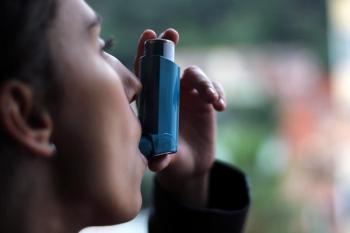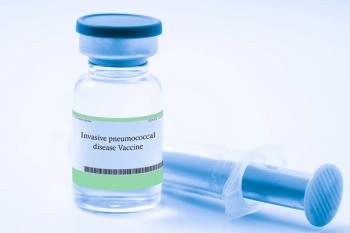
Effects of Pharmacological, Nonpharmacological Interventions on COPD
Future disease-modifying interventions for COPD may greatly affect quality of life and survival.
In the past decade, there has been significant progress in interventions for patients with chronic obstructive pulmonary disease (COPD), both pharmacological and nonpharmacological. However, these interventions are often studied separately and combined studies are still needed.
In the last few decades, there have been several notable changes in mortality rates across the world. It is evident that pharmacological and nonpharmacological interventions have played a role in these changes in COPD exacerbations and improved quality of life. Some recent data have ameliorated the influences these interventions have on survival in patients with COPD, several of which have been addressed in a review published in Respiratory Medicine & Research.1
A team of researchers “performed a narrative literature review on the effect of pharmacological and nonpharmacological interventions on survival in COPD patients,” in which they focused on meta-analyses and prospective studies except if including observational, uncontrolled, and case-control studies. None of the studies were designed to evaluate the effects of pharmacologic treatments on mortality in people with COPD.
Long-acting beta-agonist (LABA) and/or long-acting muscarinic antagonist (LAMA) use is recommended for patients with dyspnea and exacerbations with low blood eosinophils, according to the Global initiative for Chronic Obstructive Lung Disease guidelines. In assessing bronchodilators as a monotherapy or bitherapy, one meta-analysis found that tiotropium was more effective than LABAs in the prevention of COPD exacerbations and disease-related hospitalizations but there was no statistical difference between treatments for overall hospitalization or mortality rates during the duration of these studies.
Another study, comparing tiotropium to placebo found the former to be more effective for reducing lower respiratory and cardiac mortality during treatment. In a more recent meta-analysis measuring exacerbation and all-cause mortality with various LAMA/LABA regimens in patients with stable COPD found no strong evidence indicating a difference in benefits between LAMA/LABA in these patients after 48 or more weeks of follow-up.
Though most studies agree that inhaled corticosteroid (ICS) therapy alone does not effect forced expiratory volume in the first second (FEV1) decline or mortality, the synergy of ICSs with LABAs has proven to be more promising in in vitro and in vivo studies. For example, the Towards a Revolution in COPD Health (TORCH) study was the first interventional study in COPD with the primary outcome measuring mortality. Although they did not find significant differences in mortality between patients taking combined salmeterol and fluticasone propionate therapy vs placebo, they did note a significant decrease in the mean annual rate of moderate-to-severe exacerbations for those taking the combination therapy vs placebo.
Another study compared the use of salmeterol and fluticasone propionate compared with tiotropium and found significantly lowed mortality on the combined therapy group compared with the tiotropium cohort. Several other studies comparing ICS-LABA combination therapy with an active control or placebo found that ICS-LABA therapies reduced mortality rates compared with the control groups.
Recently, randomized controlled trials assessing the reduction of exacerbations with a triple therapy using an ICD, a LAMA, and a LABA in a single inhaler have also been performed. The authors of the review noted that “ICS containing inhaled therapy should be reserved for COPD patients with a history of asthma, multiple recent exacerbations, significant eosinophilia, and poor lung function after treatment with dual bronchodilators, in line with all treatment guidelines.”
In addition to inhaled therapies, oral therapies such as macrolides (ie, azithromycin), statins, blockers, and other drugs including oxygen therapy and vaccines were also assessed. Although adding azithromycin to the standard of care may help patients with COPD avoid severe exacerbations and specific mortality, no short-term or long-term studies have confirmed this. A placebo-controlled study has demonstrated that the use 3 of azithromycin for 3 months may reduce treatment failure in patients with infectious COPD exacerbation needing hospitalization but there are no definitive results regarding the direct impact on mortality in these patients. Studies assessing the use of statins found that unless a patient has a current indication for cardiovascular disease, the aggressive approach with statin therapy is not beneficial to patients with COPD.
Similarly, results from several studies suggest that the use of beta blockers do not prevent COPD exacerbations in patients with COPD who do not have concurrent cardiovascular disease. Patients with COPD who have a cardiovascular indication for beta blockers may have a reduced lung function, although the decrease is relatively small, especially if the beta blocker used is cardio-selective.
While pharmacological interventions have been vastly studied, several analyses addressing nonpharmacological interventions have been studied as well. As smoking is the main risk factor for developing COPD, smoking cessation remains one of the most effective treatments. Encouraging patients with COPD to quit smoking is a major component to helping them improve their survival. “The most effective method for achieving smoking cessation is the combination of pharmacotherapy and behavioral interventions,” the authors wrote.
Therapeutic education and drug adherence, as well as rehabilitation, have been poorly studied. Additionally, little is known about the influence of compliance on mortality. It has been suggested, however, that lower socioeconomic status, unemployment, and solitary living conditions may be factors that influence higher mortality. Nutritional support has not yet been studied alone in stable-state COPD patients but providing nutritional support to these patients is still crucial.
Noninvasive ventilation has been shown to improve alveolar hypoventilation and quality of life but its effects on survival, especially in chronic care at home, is still unclear. In one randomized controlled study, there was no improvement in overall survival at 2 years following the use of noninvasive at-home ventilation but the study investigators noted this was due to a lack of power in the study. Another study did show improvement in overall survival (mean follow-up, 2.21 years) but ventilation pressures were lower than with the first study.
A meta-analysis found that although there was significant variation in levels of pressure and initial partial pressure of carbon dioxide in arterial blood (PaCO2), an overall improvement in survival was noted in patients who were ventilated when the noninvasive ventilation was started at steady state. While less information is available on the long-term effects of noninvasive ventilation after an exacerbation, “it seems that it should be stated when PaCO2 is high, but without waiting for an exacerbation to occur,” the authors wrote.
There have been developments in bronchoscopic interventions for patients with COPD and chronic bronchitis and/or exacerbations that aim to reduce the rate of exacerbation for targeted lung denervation and bronchial rheoplasty. “Given the impact of exacerbations on quality of life and survival, it is likely that these new approaches may also have an impact on survival,” the authors noted. In contrast, bullectomy, lung volume reduction surgery, and lung transplantation may be considered for select patients with advanced COPD when medical treatment is no long sufficient; however, despite improvements in lung function and exercise capacity, survival benefits of lung transplantation in patients with COPD is still controversial.
“[D]ata on new drugs and technical procedures on bronchi are very promising,” the authors noted. “Therefore, is it reasonable to expect disease-modifying interventions in the future that could have a high impact on quality of life but also on survival in patients with COPD.”
Reference
1. Zysman M, Mahay G, Guibert N, Barnig C, Leroy S, Guilleminault L. Impact of pharmacological and non-pharmacological interventions on mortality in chronic obstructive pulmonary disease (COPD) patients. Respir Med Res. Published online June 24, 2024. doi:10.1016/j.resmer.2023.101035
Newsletter
Pharmacy practice is always changing. Stay ahead of the curve with the Drug Topics newsletter and get the latest drug information, industry trends, and patient care tips.




































































































































